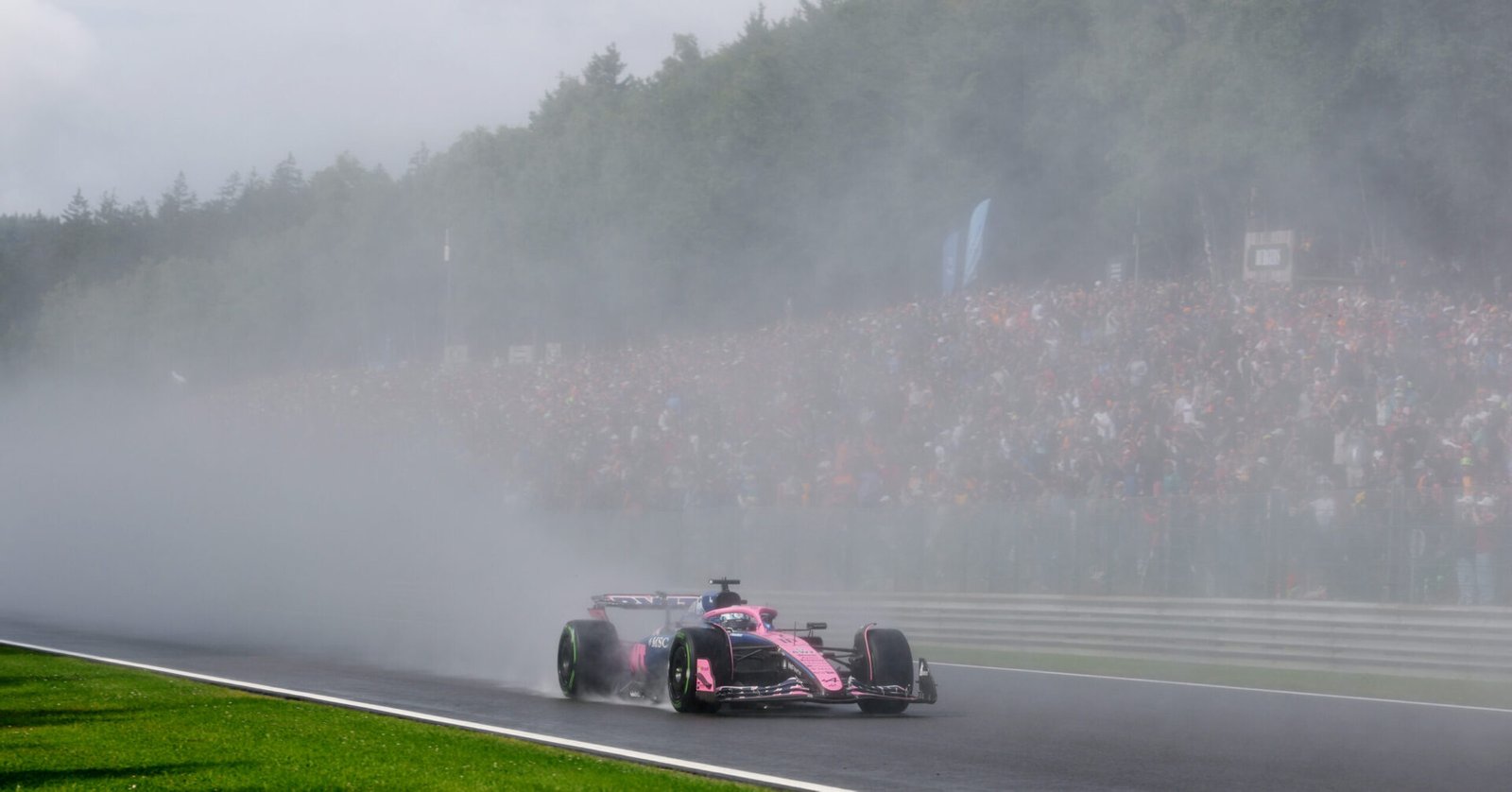One of the main talking points from the Belgian Grand Prix was the FIA’s decision not to go racing when the track was wet. This drew a lot of mixed reactions from drivers and fans alike. Most fans were disappointed that we didn’t go racing in wet conditions. However, some of the drivers were thankful for the FIA to prioritize driver safety over racing.
At the scheduled start time for the Belgian Grand Prix, the 20 F1 cars took off behind the safety car to start the formation lap. However, before the cars could complete a single lap around the circuit, the race director decided to red flag the race. They declared that there was too much standing water on the track, making visibility very low for the drivers.
While many were quick to blame the FIA for overreacting to the rain, Former F1 Champion, Nico Rosberg, thinks someone else is to blame.
Nico Rosberg does not blame the FIA for delaying the start of the Belgian GP
During The F1 Show on Sky Sports, Nico Rosberg was asked why F1 didn’t go racing in wet conditions at Spa and whether the race director made the right choice. Rosberg said:
“The window is just too small for that full wet. Because we underestimate it when we look at the TV images, the spray doesn’t look too bad. But when you’re in the car, it’s literally you are completely blind. It’s just white. You just see white. You’re like in a snow blizzard, like in a snowstorm. You cannot see anything. So you’re looking left and right to the walls of the racetrack to try and identify when the corner may be coming up at some point. And that’s just not safe to race like that.
“But those are the conditions where the full wet would be of use. And you can’t race in that because the visibility—and then as soon as visibility gets better, you don’t need a full wet anymore either. You can run the intermediate. And that’s the problem we have. It’s the historic problem that F1 has always had.
George Russell Blasts Critics as He Calls FIA’s 80-Minute Belgian GP Delay ‘Just Smart Not Stupid’
“I think he managed it okay because we have to keep it safe out there. When you have 20 cars going through Eau Rouge, if someone spins at the top, which is exactly what happened to Hubert, and you have that spray, everybody would just drive straight through it. And if there’s a chain reaction crash, no one arriving would be seeing that. So it would just be 20 cars—or 15 cars—driving straight through each other. It’s super dangerous.”
It is hard to argue with Nico Rosberg here. Over the past decade, we have seen too many tragic accidents here at Spa. Eau Rouge is one of the most challenging corners to go through when the track is wet. In this scenario, the race director preferred to be safe rather than sorry.
But Nico then points the finger at Pirelli’s full wet tyres as the real issue for not racing in wet conditions at Spa.
Why Pirelli is to blame for F1 not using the wet-weather tyres
This year, Pirelli introduced a new full-wet weather tyre for F1 cars. This new compound was meant to clear the water out of the track much quicker than the other compounds. However, in doing so, the tyres give out more spray, making visibility an issue for the driver behind.
To add to this problem, by the time the full-wet tyres are done clearing the water on the track, the drivers would have to pit again for intermediate tyres as the track conditions would be damp.
But given that the FIA red flags the race when the spray becomes too heavy, which it would with the full-wet tyres, the drivers would rather just wait for that to happen instead of pitting for full-wets only for the FIA to red flag the race anyway. This season, none of the cars have ever put on the full-wet tyres.
Now that the Belgian GP has highlighted this issue, F1 and the FIA should start to put pressure on Pirelli to solve this issue.












